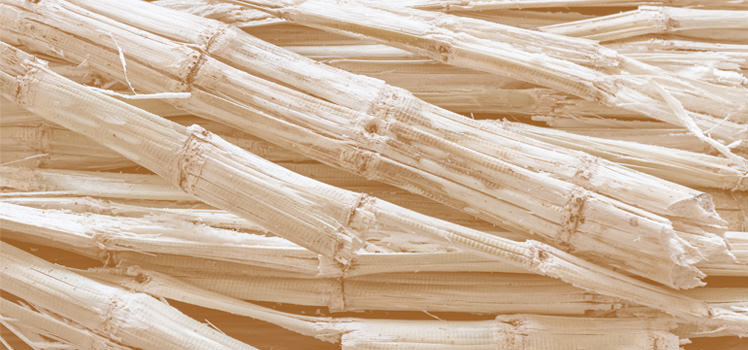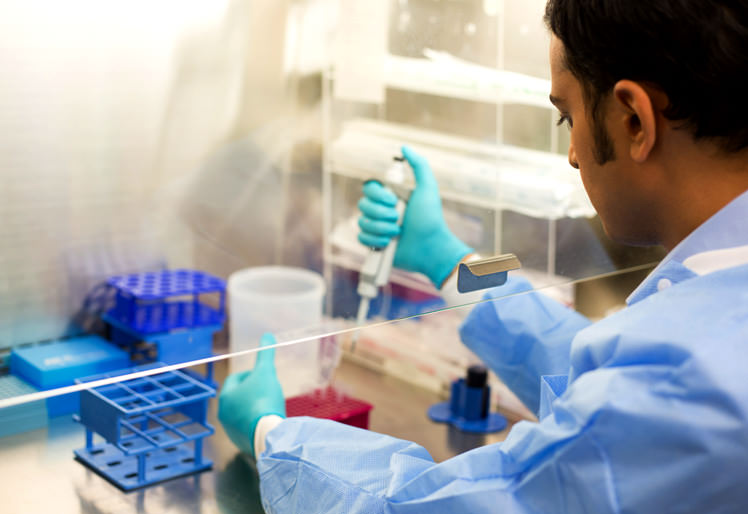
Biorefining
We are researching the chemical, physical and biological conversion of agriculture derived feedstock into more value added products and applications.
We have a multi storey state of the art research facility with sophisticated equipments and analytical instruments. The pilot plant is equipped with glass assemblies, glass line reactors (GL), stainless steel (SS) reactors, centrifuges, filters, vacuum dryers, vacuum distillation unit, high pressure SS 316 autoclaves and many more equipments to make products for a better tomorrow. Our facility is equipped to carry out reactions ranging from subzero temperature to high temperature fusion reactions. Our scale- up study to develop commercially feasible processes is done in pilot plants by a team of experienced scientists and chemists.
A few of the chemical reaction capabilities we have:
- Aldol condensation
- Acetylation
- Esterification
- Hydrogenation
- Oxidation
- Acetal formation
- Fermentation
Bagasse and cellulosic transformations

Cellulose is amongst the most naturally occurring renewable biopolymers. It has attracted global attention for the production of many products The effects of deforestation, and the reduced availability of forests as a source of feedstock in several countries have made it imperative to seek use of alternate sources of renewable materials.
India is the second largest producer of sugarcane in the world, and we have a large quantity of bagasse. Much of this is burned for the production of cogenerated power. In our company, we seek to use bagasse for enhancing the value derived from sugarcane.
The company is at the forefront of the fractionation of bagasse into cellulose, hemicellulose and lignin, and further processing to its derivatives. We have identified the following derivatives for end product sale:
- Cellulose to microcrystalline cellulose and other derivatives
- Hemicellulose to Xylitol
- Lignin to Lignosulphonate
Each of these products can be further converted into further value added derivatives finding uses in a variety of fields such as pharmaceutical excipients, regenerated textile fibers and films, biologically degradable plastics, cellulose ethers, and others which are widely used as thickeners in many applications including food, pharmaceutical, construction, and coatings We now have a pilot plant that can fractionate bagasse into cellulose, hemicellulose and lignin, at a scale of 1 ton bagasse feed per day. We are working with several customers for the development and purchase of our products.
Ethanol and Acetaldehyde transformations

The world is working to make biofuels. We also make ethanol from sugarcane molasses to participate in the fuel blending programme of the Government of India, but our longer term aim is to make value added products from ethanol. Acetaldehyde is a product chemically synthesized from ethanol and then can be used as a building block to make chemical products that can compete against petrochemical derived products. Acetaldehyde undergoes aldol condensation by which crotonaldehyde and higher aldehydes are formed.
The aldol condensation of formaldehyde and other aldehydes with acetaldehyde yields different products. Our product portfolio includes a wide range of such speciality chemicals to meet the demands of our fast-changing world.
Currently, we make products such as acetaldehyde, ethyl acetate, crotonaldehyde, 1,3- butanediol and paraldehyde. We are continuously evolving new and useful compounds for the flavor and fragrance industry, the inks and coatings industry, and intermediates in the production of pharmaceuticals. Our research aims to continuously research new products that can be made from ethanol and acetaldehyde.
Molasses and Sugar transformations

India has been producing more sugar than it needs. A large proportion of Indian farmers are reliant on cane for their livelihoods. A sugar surplus reduces sugar prices, and therefore cane prices. Our research here aims to utilize sugar (including sugar present in molasses) to make many useful chemicals using biological or chemical means. Sugar can be converted to make a variety of chemicals such as lactic acid, levulinic acid, Pyruvates, HMF, and many more chemicals.
For each product, we describe the potential uses:
Lactic acid
There are two types of lactic acid, the L+ (naturally occurring) and D-Lactic acid (unnatural lactic acid). Traditionally, L+ lactic acid is used to make normal polymer grade lactic acid. We have also tried to make polymer grade Lactic Acid and have installed a pilot plant with 100 cubic meters of capacity installed.
D-lactic acid is used for more specialty applications and is opening up new markets such as in disposables, semi durables and durables.
D lactic acid can be purified to polymer grade lactic acid with improved temperature properties, and is now used for not only biodegradability, but also durability. An example is television screen casing, made from PLA (using d-lactic acid - PDLA).
Lactic acid esters, such as Ethyl lactate, Hexyl lactate, Hexyl ethyl lactate, are also used in a variety of applications. High quality ethyl lactate is used as a solvent for the electronic industry (for use in micro chips). These esters are also used in agrochemicals, since they are biodegradable and provide the benefit of adjuvancy (particularly ethyl hexyl lactate that replaces decanamide in insecticides). We are exploring these opportunities.
Calcium, Sodium and Potassium salts of lactic acid find application in feed formulations. Lactides are used in polymers, and the hydrogenation of lactic acid gives 1,2 propane diol. These are all areas of future research.
Pyruvate
Pyruvic acid and its salts are used in making a variety of food, pharmaceutical and agrochemical products. We propose to convert Sodium lactate to Sodium pyruvate which can be converted to various other pyruvates.
Levulinic Acid
Levulinic acid (LA) can be produced cost effectively and in high yield from renewable feedstocks in a new industrial process. Low cost LA can be used as a platform chemical for the production of a wide range of value-added products. This research has demonstrated that LA can be converted to methyltetrahydrofuran (MTHF), a solvent and fuel extender. A new preparation of δ-aminolevulinic acid (DALA), a broad spectrum herbicide, from LA has also been developed. LA is used for making Ketals which are used as plasticisers. LA is also being investigated as a starting material for the production of diphenolic acid (DPA), a direct replacement for bisphenol A.
HMF
A raw material used for making FDCA. 2,5-Furandicarboxylic acid (FDCA) is one of twelve top value-added biomass-based chemicals identified. The bio-based chemical is a potential building block for novel polyester and nylon resins as well as a starting material for other intermediates such as 2,5-bis(hydroxymethyl)furan and 2,5- bis(hydroxymethyl)tetrahydrofuran. The last is a potential biofuel. 2,5-furandicarboxylic acid 2,5-bis(hydroxymethyl)furan 2,5-bis(hydroxymethyl)tetrahydrofuran FDCA is structurally related to the well-established furfural (2-furaldehyde) family of chemicals





